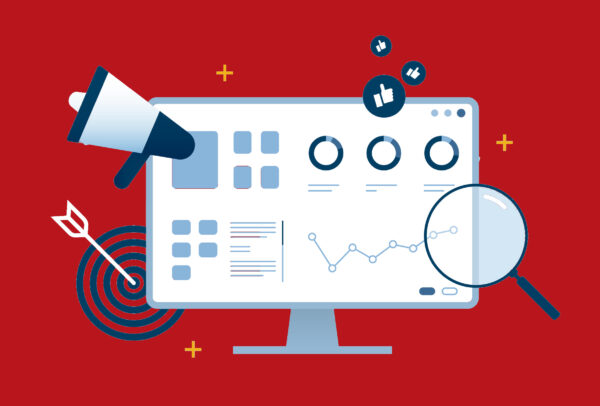Understand and successfully transition your company to the new Google Analytics 4 (GA4)
Does it sometimes seem like just when you’ve got all your company systems in place and business is humming along, somebody comes along and changes the playbook…again? Welcome to the world of Google Analytics, or “GA4” as it is now dubbed.
Perhaps you’ve heard of GA4, perhaps not. Maybe you’re confused or even a little bit overwhelmed by this latest change to the way websites collect data. The experts at Marketing Direction are here to explain the nuances of GA4 and why it is critical for your organization to act now and make the switch.

GA4 Explained
As the late great Peter Drucker said, “What gets measured, gets managed.” Successful companies have been using Google Analytics for years in their efforts to continually improve the user experience for their customers. This free analytics tools offers an in-depth look at how your business website or app is performing.
Most people currently use Universal Analytics (UA)—GA4’s predecessor. Powered by first and third-party cookies, UA collects data based on web sessions and hits that are either page views or events that you can generate using a narrow set of descriptors.
According to the Google gurus, Google Analytics 4 is “the next generation of analytics which collects event-based data from both websites and apps.” Designed for the “future of measurement,” this new property collects both website and app data to better understand the customer journey and uses data that is event-based rather than session-based. A key aspect to GA4 is its privacy control over user cookies, small files that are placed on your device when visiting websites to help the site remember information about your visit.
Cookies collect different types of data. “Third-party data is collected by an entity that is not directly affiliated with the company that is using the data,” explains Michelle Holguin, Lead Marketer, Marketing Direction. “First-party data, on the other hand, is data that the company itself collects.”
GA4 uses first-party cookies to enable data collection and reporting across multiple devices. The primary data point in GA4 is a different kind of event, one that is based on engagement instead of bounce rate, the inverse that was measured prior to the implementation of GA4. GA4 focuses more heavily on what the user does on a page and whether they engaged in a meaningful way. Specifically, GA4 counts “Engaged Sessions,” defined by those that lasted longer than 10 seconds, had a Conversion event or had 2 or more page views.
What to Do Now
Beginning July 1, 2023, versions of Google Analytics prior to GA4 will no longer process data. New data will only flow into Google Analytics 4 properties. Previously collected data will still be accessible but only for a short time after July 1. After that, on a future date to be determined by Google, data will become obsolete, making transitioning to the new release critical.
If there are important year-over-year metrics that need to be tracked without disruption, your business needs to take action sooner rather than later, states Sam Torres with Moz. “You’ll want to take certain steps now to ensure seamless tracking, year-over-year reporting—including access to historical data—and that your team is prepared to use the new tools.”
Holguin offers the following tips:
- Export your data. “Back up your data because you won’t be able to import your previously collected UA data,” according to Search Engine Journal.
- Install “Doing so will allow you to build the necessary historical data and usage in the new experience, preparing you for continuity once Universal Analytics is no longer available,” Holguin states.
- Build custom segments to better analyze your data. “Without segments,” explains Holguin, “your data is all rolled up which can make it quite challenging to get actionable insights.”
Benefits of GA4
Forbes Council Member Alastair Banks refers to GA4 as ”a revolution, not an evolution.” Among the new release’s benefits are:
- Overcoming ad-blocker and cookie-blocker challenges: While ad blockers may be able to stop third-party data collection, they will not prevent requests from your own subdomain.
- Better conversion attribution: Because data is sent as first-party instead of third-party data, companies are better able to control and extend cookie lifetime rather than depending on third-party platform limitations. Instead of identifying some users as new, they will be recognized as returning users.
- Page speed improvements: Businesses will only need to load their own GA4 server-side script without needing to load multiple third-party scripts from partners and marketing tools that are tracking the same thing.
Yes, the changes taking place with the new GA4 are many and time is of the essence. But don’t be overwhelmed by it all. Your Marketing Direction professional is here to help with the expertise necessary to ensure your company makes the transition as seamlessly as possible.


